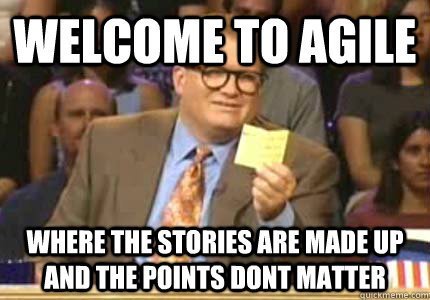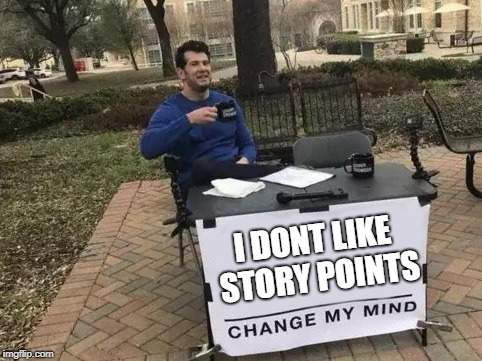I guess my view is different because a chunk of my career has been working in software situations where the product is somewhat new (1st gen, not yet production quality, within the first 3-5 years, and still gaining revenue streams… meaning not yet profitable). One can easily argue that it’s a bad idea to start a product that will take 5 years to get positive revenue, (and it’s a case to coach on not understanding MVP or proper product management), but these are typical environments I keep finding myself drawn to helping in small/mid-size companies.
In these environments, you have technical teams without a long history on an established tech stack. It’s almost impossible to form this immature team and size all stories a similar size.
AND, the business doesn’t like the “it will take 3 years” answer to their claimed “MVP scope”. Story points become the collaborative negotiation point to determine whether you are truly building MVP, and whether adding more staff is an option to cut the timeline down.
When companies are working with rounds of investment and a board that has very specific date milestones (yearly tradeshows that must NOT be missed to succeed)… you have to estimate and project somehow. Flow and trust is a great goal, but if you run out of funding for this project in X months, you have to be able to find out quickly if you are anywhere near the mark. That’s what story point projections have always provided me (80% of the value and accuracy with 20% of the effort).
I’ve also never participated in gaming points and their projections, which seems to be the basis of Joshua Kerievsky’s article linked above.
All that being said, hours estimation, or estimates on tasks under stories make me gag… as they always smell of waste or micro-management to me.




 ) and eventually there is no conclusion and the answer finally is “it depends”.
) and eventually there is no conclusion and the answer finally is “it depends”.